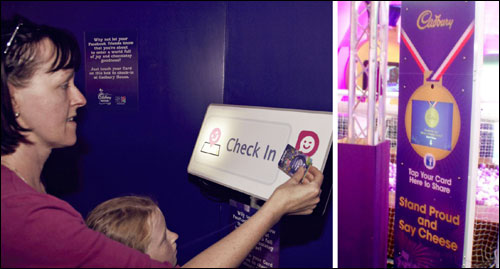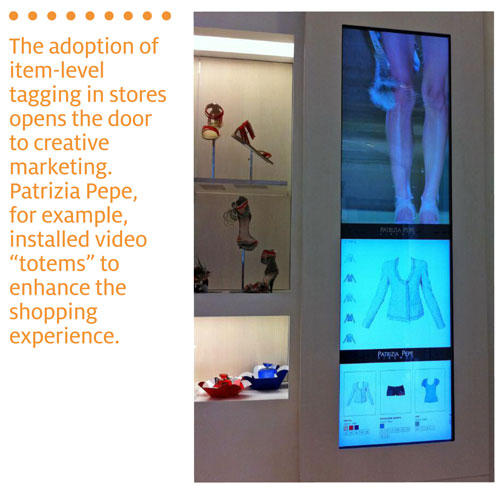Apr 27, 2016Cities and towns worldwide are populated with a wide variety of cables, pipes and poles that supply us with electricity, gas and water. These assets, made of concrete, metal, plastic or wood, reside above and below ground. Every day, workers spend hours in the field inspecting the integrity of these items, doing essential maintenance and repairs, and ensuring other utility or construction firms working in the vicinity don't accidently damage them. Much of that time is spent locating the assets and manually updating records.
RFID, often in combination with other technologies, can help utility companies save time and money by speeding their ability to locate and identify assets, thereby facilitating inspections and services. The solutions also provide a more cost-effective way to comply with government regulations.
In addition, the ability to quickly locate critical assets during an emergency can reduce infrastructure damage and enable utilities to restore services to customers within hours rather than days. Responding to the natural gas explosion that took place in Seattle in March was delayed, in part, because workers had to find and then drill down to underground gas shutoff valves, says Mike Klonsinski, international business development director for Berntsen, which makes the InfraMarker RFID system.
A public works group responsible for water utility maintenance is considering using RFID to help it speed repairs when a water main blows, preventing thousands of gallons of water from becoming waste, says Robert Zielinski, CDO Technologies' director of commercial marketing. Multiple valves sit at street-level intersections, and each valve controls a different water line and has a different set of tooling and on/off configuration procedures. "If they had a passive UHF RFID tag next to each valve, repair crews could read them [even through inches of water] to find out which valve controls which line and what tooling is needed for it," he says.
Clearly, several strong business cases exist for using RFID in the utilities sector. RFID providers say utility companies now understand what the technology is and how it can address their problems, and interest in their solutions is picking up. But while some utility companies have deployed RFID systems, many are not in a rush to embrace the technology.
Cost, especially for small, local utility firms, remains a barrier to adoption, as does the industry's culture. "The utilities industry is very conservative," says Jim Anspach, director at Cardno, which coordinates and conducts worldwide research of utility issues, and founding governor of the American Society of Civil Engineers' Utility Engineering and Surveying Institute. "It has been resisting, to a degree, some of the new technology."
One concern utilities have is that they'll become too efficient using technologies like RFID, Anspach says. "They can't put themselves in danger of not being able to, say, carry enough manpower on a regular basis to handle those emergencies that crop up," he says.
Above Ground
RFID really shines when it comes to delivering field data to workers that identifies an asset and its history, CDO's Zielinski says. Workers can know when activities, such as inspections, were conducted, and who performed those operations. They can also see which tools are required for repair services. Moreover, companies that tag poles at the point of manufacture can use RFID for asset tracking at storage yards.
A few years ago, for example, the Orangeburg Department of Public Utilities (DPU), in Orangeburg, S.C., began rolling out an RFID system from Sustainable Management Systems, to improve maintenance and repair operations on roughly 30,000 poles that supply electricity to some 25,000 customers. The poles are identified with passive RFID tags, and each tag's identification number is associated with DPU's geographic information system (GIS), to provide a visual understanding of every pole's location via GPS coordinates, says SMS CEO Barry Breede.

SMS' Pole Information Management System (PIMS) software is also integrated with the DPU's GIS database. Office personnel use PIMS to assign inspection and maintenance work. Field workers read the tags with RFID handhelds or RFID-equipped iOS or Android smartphones or tablets. "PIMS self-populates all assets on that pole from transformers to lights to wiring [from the GIS], and then the inspector makes an assessment of the condition of those items," Breede says. An inspector can photograph problems and transmit those images, along with an updated maintenance record for the RFID-identified asset, to the GIS, to streamline communications and speed repairs.
Before-and-after studies of the Orangeburg utility's inspection process "showed time and labor rates improved along with dollar savings," Breede says. "In this case, it paid back within a year of implementation, so that's a pretty quick return." But, he notes, RFID for such use cases makes more sense for utilities that have a certain scale to them—larger cooperatives or investor-owned utilities, for instance.
Below Ground
RFID in passive and even most active forms doesn't provide X-ray vision to an asset buried more than a foot in moist, metal-filled dirt, CDO's Zielinski says. While it can help detect the zone an asset is in, it can't pinpoint the asset's location for absolute assurance that a gas or fiber line, for instance, won't be hit when utility crews start digging, he says. For better location accuracy, underground solutions may equip an asset with RFID and other capabilities, such as GPS receivers or cellular connections and services. But that, he says, represents a more significant investment than for a passive tag, which could limit the type of utility assets on which the technology can be deployed.
The one-square-mile village of Thiensville, in Wisconsin, implemented Berntsen's InfraMarker RFID system, to ensure any digging taking place there wouldn't damage its main sewer line, which intersects with other utilities. The solution, designed to find subsurface assets, combines RFID with GPS and magnetic locating technologies, and includes handheld readers and mobile application software. The UHF tags don't sit on the iron pipe, but rather reside above it or slightly off to its side. This eliminated the need for Thiensville to dig dozens of feet down or through asphalt or concrete. RFID identifies the pipe, and the magnet that sits atop the tag is used in conjunction with GPS data to locate it.
While Thiensville never experienced a problem with its sewage line before implementing the RFID system, the process of dispatching surveyors and trucks to confirm pipe locations and determine whether it was safe to dig somewhere was arduous. Andy LaFond, the village's director of public works, believes the locating system helped to avoid potential problems when the WE Energies electrical utility undertook a conversion project that required a lot of boring near the pipe. "Any contracting work that could hit or damage the main sewer line would be a financial and environmental disaster," he says. "On average, we pump probably 600,000 to 700,000 gallons of sewage a day. If we were just to shut that off [if an incident occurred], that would back up basements with sewage."
Riviera Utilities, which serves South Baldwin County in Alabama, participated in a research project conducted by Auburn University's Geospatial Research and Applications Center (GRAC), to determine whether underground assets could be found more quickly with GPS alone or with GPS and the RFID InfraMarkers. "The research we have done with Riviera and with other projects clearly proves GPS alone is not sufficient to mark infrastructure elements," says Chetan S. Sankar, GRAC's director. "You need other technologies in addition to GPS," he adds, noting that RFID can play a very strong role in identifying those elements.
The InfraMarker system provides other benefits, Sankar says. Every time a tag is interrogated, that information is captured and date-stamped for a true audit trail, key for life-cycle management. "With small companies, the utility people have been there for a long time and often know the history" of their assets, he says. "While it's helpful there, too, it can be very helpful in big city utilities, where there may be large turnovers of staff," and with them asset knowledge.

Corley Lauderdale, Riviera's utilities engineering and field operations superintendent for gas, water and wastewater, participated in the research project and is a fan of the InfraMarker system. But cost played a role in Riviera's decision not to "take things beyond the experiment stage at this point," he says. "Each of the InfraMarker units is about $25 to $30, and that's rather expensive if you need a few thousand of them." Plus, he says, you have to equip workers with handheld readers.
Still, "The potential for RFID adoption by utilities is very high," Sankar says. He notes that Auburn students who participated in the research projects calculated as much as a 20 percent cost savings using RFID to tag the assets of 10-mile-long gas pipelines. The savings, he says, comes from how quickly one can identify an asset to fix it.
LaFond notes that Thiensville was fortunate not to have cost issues around its deployment. The village, he says, is 100 percent debt-free and at the time of its implementation, Berntsen was just developing the technology and provided it at reduced cost in exchange for the utility's feedback and efforts in helping it move the technology to the next stage.
Klonsinski says it's important to consider how the system can help utilities save money. By finding critical underground assets faster, he says, the customer spends less money on labor, suffers less damage to the infrastructure, and minimizes time wasted from projects put on hold while assets are located. The solution, he adds, "works best for new construction or in places where you already are uncovering assets for inspection or maintenance, or new placement or repairs. It's very costly just to go ahead and choose to find all your infrastructure, dig it up and put a tag on it. But if you're uncovering assets on a regular basis, you can mark all your infrastructure over time." That said, Berntsen now offers aboveground markers, so customers can mark underground assets without having to wait for them to be uncovered.
Compliance Could Drive Adoption
Some utilities may turn to RFID location solutions to solve another issue—the need to better manage and assure the integrity of underground assets, to support compliance with state or federal safety regulations. Metallic lines that utilities laid 50 to 100 years ago are deteriorating, says Tony Radoszewski, president of the Plastics Pipe Institute (PPI). The U.S. Department of Transportation's Pipeline and Hazardous Materials Safety Administration (PHMSA) regulations are beginning to require that utilities determine pipeline viability.
"There are increasing regulatory requirements coming out all the time to improve the inspection and tracking of the nation's infrastructure," Klonsinski says. "PHMSA is just one agency that is becoming more aggressive about utility managers tracking the performance and maintenance of the gas transmission infrastructure."
Thiensville, LaFond says, uses the data it writes back to the RFID tags on its assets with the InfraMarker system about maintenance and other actions to help in its reporting to regulating bodies. "Wisconsin has a Capacity Maintenance Overflow and Management program for sewer systems, so every year it has benchmarks and definable goals," he says. "Having a way to locate and identify our force's main assets was a benchmark we achieved."

Riviera's Lauderdale also sees the benefits of using RFID to comply with government safety regulations. "We do have regulations pretty specific to the gas industry about doing quarterly and yearly leak surveys of gas systems, an area at a time, and reporting the survey results to the Federal Highway Administration," he says. RFID, he adds, could be used to document gas distribution system leak repairs.
Ideally, assets should be RFID-tagged at birth at the manufacturing plant, says Layne Tucker, CEO and founder of EchoRFID, which makes the PipeTalker asset and integrity data management system, designed to help reduce a utility's liabilities by proving it has done its due diligence. "We can locate all material installed in a project and recall its georeferenced location," he says. The solution uses GPS and RFID to track assets and their attributes, from construction through maintenance and operational inspections for quality control. The PipeTalker software runs on handheld devices, such as smartphones and tablets, and uses open architecture to integrate with existing GIS systems.
"You want to follow that component, whether it's a pipe, valve or fitting that goes into a line during manufacture, and whether it's joining plastic pipe together or welding steel pipe or fusing something else," Tucker says. "You want to have historical construction information from the manufacturing level on, to trace it at the warehouse, and merge it with the materials management information."
Utility companies buy and sell assets all the time, he explains, and having good, up-to-date data on every asset adds to its value.
Should an incident occur, the utility would be able to provide regulatory bodies or government inspectors with information documenting that it had done its due diligence—and it could comply in a more timely manner than if it had to dig through piles of paper stored in file cabinets or cartons. "Our system gets that information electronically in eforms that are stored in the cloud very securely," he says. "We can search our database for any piece of information on any component tied into the RFID tag and find it within seconds and print it."
PPI's Radoszewski says industry organizations see value in the concept of improving traceability. "The whole idea is to take advantage of technology that tells you everything about the pipe and anything else near it, so if anything goes wrong you can go back and investigate," he says.
Pipeline integrity management, as demonstrated by solutions like EchoRFID's, "is right in line with what we need in this country," Cardno's Anspach says. "We really need to do a better job of determining how we are going to document the utilities we put in the ground today, because we didn't do a very good job of documenting that in the past," he says.
In the near future, RFID field markers will become more even more valuable when they are embedded with sensors that detect what is going on in the environment around that tag, Klonsinski says. "Knowing that land in which the pipe is located has shifted or that increased gas levels are detected over a weldpoint can give infrastructure managers an early warning that these assets are at risk," he says. "This technology has the potential to help stop a disaster before it happens."
A Lifetime of Benefits
Most RFID utility projects are designed to identify cables, pipes and poles once they're in the field. But Texas Electric Cooperatives (TEC), which represents dozens of electric cooperatives statewide, wants to cash in on RFID's benefits early on. TEC is deploying Sustainable Management Systems' YardTrack solution to automate the time-consuming, error-prone manual processes used to inventory the many thousands of assets at its Jasper manufacturing facility and yard and at roughly 20 member-operated storerooms.
TEC will print the ultrahigh-frequency RFID tags onsite and affix them to the newly manufactured poles. The RR Donnelley tags are encapsulated in weatherproof material and tracked with Motorola Solutions handheld readers. The YardTrack solution includes software, from SMS partner Stratum Global, for identifying the location of assets in real time. "We showed them we can take a three-, four- or five-day process and winnow that down to less than a day in terms of inventory management, and with a higher degree of accuracy" at the manufacturing yard, says Barry Breede, SMS' CEO.
The individual co-ops will use fixed readers at the entry and exit points of their facilities, to confirm receipt of new poles and identify poles taken from inventory. "We chose fixed read zones because of the need to have 24/7 read capability," Breede says. "Often, the utilities must access inventory during nonworking hours, particularly during storm response. With inventory visibility, they will quickly know how many poles they can deliver after a big storm."
TEC is now considering using SMS's Pole Information Management System (PIMS) for inspection and maintenance in the field. "Doing so would allow TEC and its members the ability to leverage their investment in RFID, because we can associate PIMS-driven field data with the original data captured in YardTrack," Breede says. "Effectively, this will give TEC full life-cycle visibility of its poles, from manufacturing through final disposal.
Where in the World Is RFID Helping Utilities?
Companies worldwide are adopting RFID location solutions, to reign in costs, maintain services and improve safety. Here are some examples.
California Water Utility Uses RFID to Reduce Terrorism Risk
Alco is utilizing active tags to control access to its pump stations, as well as track assets, enabling it to locate equipment quickly in the event of an emergency.
GDF Suez Tries RFID Underground
The multinational energy firm is testing a system that employs passive RFID tags to enable the detection of subterranean polyethylene utility pipes.
RFID News Roundup: Heathrow Airport to Use RFID to Map Underground Utilities
BAA Airports, an owner and operator of seven airports in the United Kingdom, plans to use RFID markers to help workers locate underground pipes and cables before they begin to dig.
RFID Keeps City Sewers Running Smoothly
In Warendorf, Germany, workers use RFID to track the maintenance of the city's 127-mile network of sewage canals and pipes.
RFID Locates Pipes and Secures Meter Collection for Utilities
A South American water company is piloting IDMeters' passive UHF solution designed to locate pipes above or below ground.
RFID Cements Its Place in the Construction Industry: RFID Marks the Underground Spot
London's City of Westminster launches a pilot project to use RFID-enabled markers and GPS to identify and manage underground municipal water pipes and electrical cables.
RFID Tracks Wooden Utility Poles at the Factory and in the Field
Cox Industries is using EPC Gen 2 tags to manage the storage and shipment of poles it makes, while a South Carolina city is employing similar tags to manage its poles' inspection and maintenance.
Westar Energy Tracks Power Poles, Transformers With RFID
The Kansas utility company uses the technology to automatically identify when each pole and transformer is removed from storage yards, by whom, and when unused items are returned.


